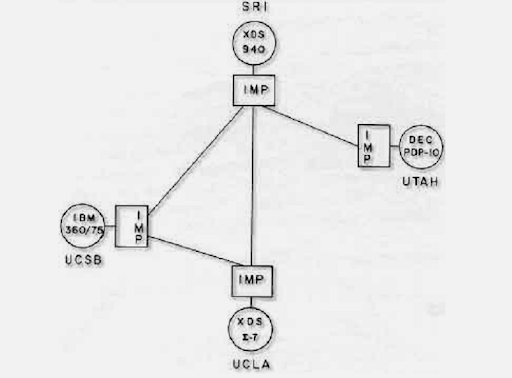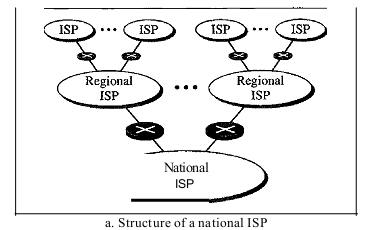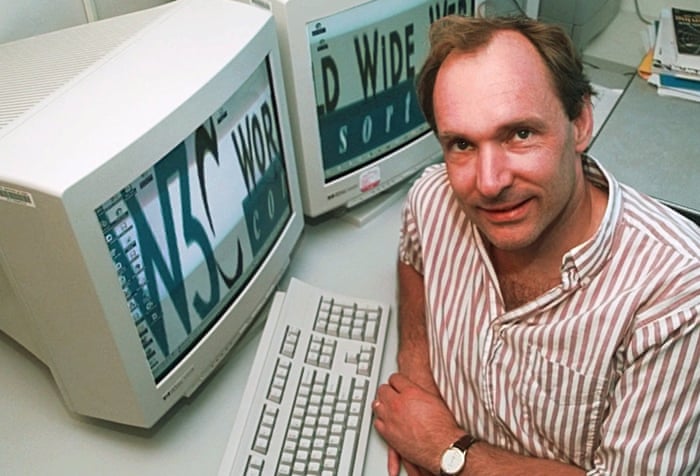Brief History of the Internet
Published:
Author: Yusuf Brima
Introduction
The scope of this blog post is to get a concrete knowledge on history of the Internet, the vanguards of the Internet including its present status. We shall also explore other possible network models that were parallel to the Internet model. The Internet (capital I) was a dream perceived by the Department of Defence (D.o.D.) which is the US as a contingency plan to sustain probable nuclear attack during the Cold War era. The World Wide Web (WWW) is just one of the scores of services supported by the Internet — they are not synonyms. The Internet was created in the 1960s by researchers, scientists, engineers amid others. The web is a system that is based on Hypertext (see blog post 5) to provide a unified way of accessing immeasurable amount of information around the globe with just a few clicks. We shall conclude this blog post with the construct of Hypertext that underpins the Web; Hyper Text Markup Language HTML) is the technology that is used to author web presentations (web pages). We shall discuss briefly other technologies that are being developed to make the web dynamic, interactive and aesthetically pleasing. These technologies include CGI (Common Gateway Interface), pHP (Hypertext preprocessor), Scripting languages, CSS (Cascading Style Sheet), AJAX (Asynchronous JavaScript and XML), Active Server Page (ASP), ASP.NET and other technologies.
 The Internet as we know it today
The Internet as we know it today
BIRTH OF THE INTERNET
The Internet is a product of a paranoid establishment during the Space Race and Cold War era. Owning to the lunching of Sputnik (a USSR artificial satellite) in 1957; the US Department of Defense issues Directive 5105.15 establishing the Advanced Research Projects Agency (ARPA) (Gromov, 2012). In the mid-1960s, mainframe computers in research organizations were stand-alone devices. Computers from different manufacturers were unable to communicate with one another. The Advanced Research Projects Agency (ARPA) in the Department of Defense (D.o.D.) was interested in finding a way to connect computers so that the researchers they funded could share their findings, thereby reducing costs and eliminating duplication of effort (Forouzan, 2007). In 1967, at an Association for Computing Machinery (ACM) meeting, ARPA presented its ideas for ARPANET, a small network of connected computers (Forouzan, 2007). The rationale was that to connect computers (possibly) from different manufactures and platforms to a specialized computer; this node is known as Interface Message Processor (IMP). The IMPs serve as the “blackboxes” in the whole system. By 1969, ARPANET was a reality. Four nodes, at the University of California at Los Angeles (UCLA), the University of California at Santa Barbara (UCSB), Stanford Research Institute (SRI), and the University of Utah, were connected via the IMPs to form a network. Software called the Network Control Protocol (NCP) provided communication between the hosts. The diagram below shows the configuration of this network.

The first DRAPA Internet
The Internet as we know it today: The Internet has gone through a couple of phases since its creation in the 60s. Today’s Internet is accessed by many methods chiefly among these are: Dial-up connections, Satellite, DSL and other methods. These connections may be provided by Internet Access Providers (IAPs) or corporate organizations. The Internet today is controlled by private companies, research institutions, universities, schools and other sectors. There is no centralized control over the Internet; organizations control their own “pieces.” Today most end users who want Internet connection use the services of Internet service providers (lSPs). There are International Service Providers, National Service Providers, Regional Service Providers, and Local Service Providers. The Internet today is run by private companies, not the government. The figures below show a conceptual (not geographic) view of the Internet.

International Service Providers are gigantic organizations that provide high data rates to National Service Providers. They operate at the international level of telecommunication. These Service Provider own large trunks of fiber-developed data transmission capabilities; data rates are in terabytes per second (TB/s). National Service Providers are companies that provide end-users direct access to Internet resources. They have complex switching circuitry known as Network Access Point (NAT) to provide connectivity between peer Service Providers. NAPs are sometimes operated by third-party companies. NSPs do connect with each other through peering points to provide inter-Provider operability for clients. These normally operate at a high data rate (up to 600 Mbps) (Forouzan, 2007). Examples of National ISPs in Sierra Leone are Sierratel, Airtel, Africell and others. Local Internet Service Providers: Local Internet service providers provide direct service to the end users. The local ISPs can be connected to regional ISPs or directly to national ISPs. Most end users get connected to the local ISPs. Note that in this sense, a local ISP can be a company that just provides Internet services, a corporation with a network that supplies services to its own employees, or a not-tor-profit organization, such as a college or a university that runs its own network. Each of these local ISPs can be connected to a regional or national service provider.

Birth of the World Wide Web
The web is a pretty recent feature (Electronic mail is an example of an application that pre-dates the Web) of the Internet that has radically changed the way we communicate and perceive information. Researchers at CERN (European Organization for Nuclear Research) were the vanguards for the creation of the World Wide Web — which is a global hypermedia system of information storage and retrieval. The WWW project was originally developed to provide a distributed hypermedia system which could easily access – from any desktop computer – information spread across the world (Gromov, 2012). The web includes standard formats for text, graphics, sound, and video which can be indexed easily and searched by all networked machines. Using NeXT’s object-oriented technology, the first Web server and client machines were built by CERN – the European Laboratory for Particle Physics in November 1990. Since then the Web has truly encompassed the globe and access has proliferated across all computer platforms in both the corporate and home markets.
HISTORY OF HYPERTEXT
The WWW is based on the concept of hypertext. The word hypertext was coined in 1 965 by Ted Nelson. Hypertext is text that contains links so you are not constrained to reading the text from beginning to end, you can jump around inside the text too. It is possible to use paper documents in this way, and components of books such as contents pages, indices, glossaries, footnotes and appendices all provide the sort of nonlinear access required for hypertext. However, it was not until the advent of Personal Computers that hypertext became truly accessible. Hypertext was seen as a way to use computers to present information in the same way that our brains store it, thus making it very intuitive to use. However, it can also be confusing ― navigating within a hypertext document can be disorienting. Users often get a sense of being lost with no clear path back to where they want to be. In designing a hypertext system (for example a Web page), thought must be given to clear navigation aids f or the user (i.e., a schematic of the whole site should be considered in relation the individual web presentations).

Hypertext Markup Language
Before the WWW was ever conceived, various hypertext theorists had ideas to use computers to realize their visions of hypertext retrieval systems. Ted Nelson worked on the Xanadu project ― its aim is to create a database of everything that anyone has ever written, all connected to each other via hypertext links. Other projects such as Knowledge Management System (KMS) and NoteCards were adaptable hypertext systems used to organize information. HyperCard was the first hypertext system to become popular. This was in part because it was bundled free with every Macintosh and in part because it was graphical and easy to use. It was the advent of the Internet that gave the means for creating a truly universal hypertext system. The dreams of man y early hypertext theorists were partially realized in the World Wide Web ― a global database of a vast amount of information all linked via hypertext. Hypermedia can be seen as an extension of hypertext to include other media as well. A hypermedia system can have links between text, pictures, sounds and movies
History of Hypertext
The Internet is yet a young infrastructure when viewed from the human civilization time scale with fascinating opportunities that are being explored. The internet has been the landmark revolution throughout the human civilization; it has been the masterpiece of our achievement in making the world a Global village where physical frontiers are gradually becoming eclipsed. There are vistas of opportunities that are being provided by the Internet; from academic to Dark net sub-culture. People from all walks of life (these include scientists, researchers, engineers, theorists etc,) have contributed to making the Internet a truly evolutional entity that detached from the politics of the mundane world. The power of the Internet lies in its independency; it is truly platform-independent, it is useable irrespective of what platform one uses. The web (World Wide Web), which is just one of the many applications supported by the Internet infrastructure, is much younger compared to the Internet. It was born at CERN (Conseil Européen pour la Recherché Nucléaire former title of European Organization for Nuclear Research) under the auspices of Tim Berners-Lee. Hypertext is a much older concept that that was coined by Ted Nelson in the mid-60s; the concept was to create an intuitive knowledge management system analogous to conventional codification systems that have: table of contents, summaries, indexes, and glossaries that make them easily navigable.

Tim Berners-Lee Inventor of the World Wide Web
Conclusion
The Internet is yet a young infrastructure when viewed from the human civilization time scale with fascinating opportunities that are being explored. The internet has been the landmark revolution throughout the human civilization; it has been the masterpiece of our achievement in making the world a Global village where physical frontiers are gradually becoming eclipsed. There are vistas of opportunities that are being provided by the Internet; from academic to Dark net sub-culture. People from all walks of life (these include scientists, researchers, engineers, theorists etc,) have contributed to making the Internet a truly evolutional entity that detached from the politics of the mundane world. The power of the Internet lies in its independency; it is truly platform-independent, it is useable irrespective of what platform one uses. The web (World Wide Web), which is just one of the many applications supported by the Internet infrastructure, is much younger compared to the Internet. It was born at CERN (Conseil Européen pour la Recherché Nucléaire former title of European Organization for Nuclear Research) under the auspices of Tim Berners-Lee. Hypertext is a much older concept that that was coined by Ted Nelson in the mid-60s; the concept was to create an intuitive knowledge management system analogous to conventional codification systems that have: table of contents, summaries, indexes, and glossaries that make them easily navigable.
References
Bagad, V. S., & Dhotre, I. A. (2003). Computer Networks (1 ed.). Shaniwan Peth, India. CO.LTD, S. C. (1997, March 3). E-mail: connecting people across the Globe. United States: SULTAN CHAND & CO. LTD. Crosbie, V. (2002). What is the New Media. Forouzan, B. A. (2007). data Communication and Networking. New York: Mc-Graw Hill. Gorth, D., & Skandier, T. (2005). Network Study Guide (2 ed.). San Francisco, United States: Sybex. Gromov, G. (2012). History of Internet and World Wide Web - Roads and Crossroads of the Internet History. NetValley Online Writings.

Leave a Comment